- Home
- James A. Michener
Chesapeake Page 29
Chesapeake Read online
Page 29
He was at an impasse. How he wished that some great ship from London would sail into Devon so that he might inspect it. None came. One page of a book from London would explain everything, but he had no such books. Bitterly he recalled his tedious days, aboard the ships that had carried him from London to Boston to Barbados to Marigot Bay to Devon: I spent all that time on ships and saw nothing.
That was not entirely correct. He had seen a great deal about decking a ship and building bulwarks and finishing off the gunwales, but like an artist who rides a horse a hundred times, and never comprehends it until he tries to draw it, or like a novelist who has witnessed a human situation repeatedly but has not really understood it until forced to state in cold words what happened, he had lived in the heart of ships but had not seen them.
Ironically, during his confusion, the solution lay all about him ... on the ground. As he paced at the forward end of his log, eyes fastened on the waiting curve, he happened to stumble, and when he looked down to see what had tripped him, he saw the massive roots of the oak sweeping sideways from the stump of the severed trunk. He stopped, studied the curious joint made by root and trunk, then knelt and began feverishly scraping away the earth, and when he finished he had laid bare one of the most powerful joints in nature, the flexed kneelike structure that is formed where a heavy root branches out from a main trunk, and as it lay exposed Paxmore realized that he had found the solution to his problem: instead of bracing his exposed bow with cumbersome diagonals, he would build into it this massive joint which contained its own bracing.
But when he turned to his Indians, about to ask them to help him dig out this knee, he found that they had gone; they were tired of building ships and would work no more. For him to continue without them would be impossible, so in profound anxiety he launched his log canoe by himself and sailed to Devon to ask the Steeds what he must do. When he reached there he found them occupied at the wharf, for a ship from Barbados had recently dropped anchor in Jamestown, and the Steed sloop had brought across the bay Samuel Spence’s extraordinary letter and a cargo which Paxmore could not have anticipated:
I have been haunted by the debt I owe thee in payment of the good work thee did for me, especially the rebuilding of that ship at Marigot Bay, and I have constantly wondered how to repay thee. Coins we have none, and our correspondents in London are in worse shape than we. They cannot hope to pay my bills, for the plague last year and the fire this have decimated them, and I had concluded that my debt to thee would have to stand undischarged, when a singular chain of circumstances put me in a position to aid thee.
A gentleman of this island owed a debt to one of the London firms who owed me, and we agreed that he should simplify things and pay me, but he had no money neither. He did, however, possess an interest in a slave ship due to arrive from Luanda, and when it put in to our port, he delivered to me a portion of his slaves.
I am making bold to send thee nine of these Negroes in discharge of my debt in hopes that thee will consider this fair exchange. Quakers who have passed through here advise us that thee has married Ruth Brinton, that stalwart spirit, and we send thee both our love.
The slaves had not yet been unloaded, and when Paxmore went to the sloop he found them huddled forward, and he wondered why, in the safety of harbor, they still clung together, but when he jumped down into the boat he saw that they had been chained to prevent disturbance during the passage across the bay. He stood for a moment scrutinizing these strangers: he saw their black forms, their promising muscles, the way in which the women held themselves proudly, even in chains.
“Cut them loose and I’ll take them to Peace Cliff,” he called to Henry Steed, but Steed, who had often overheard Jamestown planters gossiping about their slaves, said cautiously, “Safer to keep them bound till they’re off the water,” and he directed his captain to sail the sloop to the cliff. There the blacks were marched onto the wharf, still in chains: six strong men, three women of childbearing age, all wearing iron collars. The Eastern Shore had received its first cargo of slaves, the lawful property of Quakers.
“All prime,” the captain said as he threw the chains back into the sloop.
“We can use them,” Paxmore said. The women he led to the house, where Ruth Brinton was on the floor, nailing together an extra table for her kitchen. She was astonished to see the blacks and asked, “What are these?”
“They’re ours.”
“In what way?”
“Samuel Spence, in Barbados, sent them in discharge of his debt to me.”
“And what are we to do with them?”
“They belong to us. They’re our slaves.”
Ruth Brinton rose, wiped her hands, and studied the women. She could remember when she was that age, burdened with perplexities, and thought: How much greater theirs must be. To her husband she said, “It would be quite improper for us to hold slaves. It would be against the will of God.”
And then began the great debate which would ultimately invade every legislature, every church and every home. Edward Paxmore cited three facts, the first two of which were economic and therefore of little persuasion where Ruth Brinton was concerned: “Spence owed me the money and had the right to pay it in his way. Also, the slaves arrive just when we need them most. God must have sent them to help us finish the ship.”
His wife looked at him, aghast that he would offer such irrelevancies, but his third citation was moral, and not at all irrelevant: “When I was an indentured servant in Massachusetts it was the custom for preachers to sermonize once each quarter on the duties of servant to master. How well I recall those thundering admonitions!” And he began to recite, as he remembered them, those compelling passages in which God specifically ordained and supported a system of slavery:
“Servants, obey in all things your masters, not with eye-service only but in fear of God.
Servants, be obedient to them that are your masters with fear and trembling.
Servants are to please their masters in all things, not answering again.
Let all servants who are under the yoke count their masters as worthy of all honor.”
Ruth Brinton was appalled as she heard this recital; she could not believe that he was taking such teaching seriously. It was as if she were seeing for the first time the whole profile of her husband—and it was ugly.
“Edward,” she said with iron force in her soft words, “does thee not realize that the whole teaching of Jesus is opposed to the slavery of one man to another?”
“I only know what the Bible says, and it says over and over that some men are to be slaves, and are bound to obey their masters.” Before his wife could interrupt he said, “Now, the Bible also says that masters must be just, and that they must look after the welfare of the slave. The ministers in Boston used to emphasize that, too. In fairness to them I must say they always warned the masters to be gentle.” Then, in recollection of those distant sermons, he added, “But I do recall that they warned us servants more sternly than they warned our masters.”
He would be a good master. He stopped all work on the ship so that stout cottages could be built for his slaves. He suggested to Ruth Brinton that she take the women into the house to do the heavy work, but she refused. She did, however, train one of them to look after her baby; the others grew vegetables and tended tobacco.
The men, tall and straight, proved excellent helpers at the ship, Abiram and Dibo showing such skill in ripping out planks that Paxmore established a sawyers’ pit for them: huge pine logs were rolled into position atop a deep pit, in which Dibo stood day after day. Abiram, the stronger of the two, perched on the log, holding a long two-handled saw whose teeth he kept biting into a straight line along the pine. At the shout of an African word, Dibo in the pit would jump in the air, wrap himself about the saw’s handle and exert all his weight in pulling downward. This descent of the saw made the cut; Dibo then pulled it loose, shouted another word, and Abiram would haul the heavy saw back into position. In this way, these
two men hacked out the planks from which the ship would be constructed.
But when the time came to fit the timbers to the keel, and thus form the skeleton of the ship, Paxmore ran out of roots with which to brace his work. He searched the cliff area for oak roots formed into right angles, but found none; he did uncover a few of pine, but quickly learned that these lacked the requisite strength, and he was wandering far from his own lands when he came upon Stooby Turlock hunting wolves. He reported to his wife on this first meeting:
“He seemed a visitor from another world, a grown man of twenty-six with the ignorance of a four-year-old. However, when I indicated that I was searching for special tree roots, he understood at once and led me to at least nine oaks containing splendid specimens. He displayed such unusual knowledge of trees, that I invited him to work with me, but this word frightened him.”
When Paxmore required additional roots to frame out the ship, he looked for Stooby but did not find him. Learning that the young man lived in the marsh with his disreputable father, he sailed there one afternoon, failed to find the entrance, and was beating about the edges when a musket shot rattled past the canoe. Rising from the rushes like an apparition, Timothy Turlock shouted, “Who that?”
“I’m looking for Stooby.”
Turlock spat in the water, then indicated where the entrance to his creek lay, and when Paxmore drew up to the rickety wharf the old man was waiting. “Can I see Stooby?” the carpenter asked.
“Not here.”
“Why didn’t you tell me—”
“You can wait.” He helped Paxmore from the canoe, then led him to a filthy shack in which a heavyset blonde was lounging. She made no effort to greet him, so he sat on a log which had been propped on tripod legs, and as he waited there he became aware that in one corner of the hut a young girl was standing.
“It’s Nancy from James Lamb’s!” he cried, rather pleased to find someone he knew. “What’s thee doing here?”
“She run away,” Turlock said. Paxmore could not know that this was the child with whom old Turlock had frequently been found in bed. He assumed that she had escaped for the usual reasons given by servants and slaves.
“James Lamb is a kind master,” he argued, and no one refuted him.
Stooby did not appear, and after a prolonged wait which grew more and more unpleasant, for the hut and its occupants were loathsome, Paxmore announced that he must get back to the cliff. “Mr. Turlock, will thee please tell thy son I need more roots?”
“I may,” and the visit ended, but three days later Stooby came to the shipyard with word that he had located more than two dozen excellent specimens and that if Paxmore would assign three slaves to do the digging, he would deliver them to the site. It was in this offhanded way that Stooby began working for Paxmore, never on a regular basis, for he refused to be tied to any job; he simply responded whenever Paxmore needed special timbers or roots.
“He’s really stupid,” Paxmore told his wife, “and yet he isn’t.” What he failed to discover was that whenever Stooby delivered wood, he studied with ratlike eyes every new step taken in building this ship. In the end, Stooby would know as much about building ships as Paxmore, and he would have taken one more giant stride toward becoming the complete waterman: he would know not only the waters but the ships that sailed them.
The most remarkable aspect of Edward Paxmore’s shipbuilding was his collection of tools. Whatever he needed, he had to fashion for himself, and at the end of two years he owned an amazing collection of implements. He had, of course, his saws and adzes, those sovereign tools of the boatbuilder; Paul Steed, watching him carve a plank with delicate precision, told his brother, “Paxmore could write his name with an adze.”
He made clamps for holding small items, gouges for tearing away unwanted wood, augurs for boring holes, and the most intricate saws. Since nails were precious beyond gold—all colonial construction depended upon what could be imported from England—he learned to carve small pieces of oak into nail-like forms; when they were hammered or screwed into position and water applied, they swelled and held disparate parts together almost as well as metal nails.
But always he lacked the essential tool without which the workman can never attain true mastery: he did not know the names of any of the parts he was building, and without the names he was artistically incomplete. It was not by accident that doctors and lawyers and butchers invented specific but secret names for the things they did; to possess the names was to know the secret. With correct names one entered into a new world of proficiency, became the member of an arcane brotherhood, a sharer of mysteries, and in the end a performer of merit. Without the names one remained a bumbler or, in the case of boatbuilding, a mere house carpenter.
Paxmore would always remember the July morning on which a two-masted Bristol tobacco trader put into Devon, and the joy with which he scrambled through all parts of the ship, asking the ship’s carpenter what the various parts were. It was then that he began to unravel the mystery of names.
“Trunnels we calls ’em,” the man said of the tree nails Paxmore had been carving, and as trunnels they acquired added value, for this meant that they were part of an ancient heritage.
“It ain’t backbone. It’s keel. And the plank we attach on top for tying into is keelson.” But the word which pleased him most was the one the Englishman used for the bent roots upon which the stability of the ship depended. “Them’s knees, and you best cut ’em from hackmatack. Better’n oak.”
The measurements of a cut board were the scantlings, the squared-off rear was the transom, the piece of timber used to extend the bowsprit a jib boom, and the splice of timbers a scarph. But what astonished him was the fact that floor meant not an extended flat area, as in a house, but the small, rugged timber jammed up against the keel, on which the inner bottom of the ship was framed.
On this visit Paxmore picked up a hundred words, and with each, a new insight to his task, but none of his new knowledge disturbed him so much as what he discovered about the mast. For his ship he had trimmed a very tall pine tree into a perfect cylinder, and had erected it in an arbitrary manner at an arbitrary spot. Now he learned that he had done everything wrong.
“No! No!” the English carpenter admonished. “Never a rounded base! Because if it’s rounded at the bottom, how are you going to wedge it fast where it stands in its step upon the keelson? And if it’s rounded where it passes through the deck, how can you caulk it to prevent leaks?”
He took Paxmore to the lowest section of his ship and showed him how the shipbuilders of the world stepped their masts. “At the bottom, keep the tree a square. Then it can be set into this box, and knees can be thrown against it, and it can be wedged along straight lines, and no wind can move it.”
What a difference between a real mast and the one Paxmore had devised! The true one stood firm, wedged powerfully on all sides, foursquare with the keel. His wobbled because its circular base provided no secure line for wedging.
“Now, at this height, as she approaches the hole through the deck, trim her to the octagonal,” and the Englishman showed what a handsome job the Bristol shipbuilders had done in modulating a square base into an octagonal riser; the eye could scarcely see where the shift had been made, and as the mast passed through the deck, a vital transit, it provided eight solid sides which could be wedged and waterproofed. Paxmore’s was a leaky mess.
“It’s only when we get up here,” the Bristol man said as they stood on deck, “that you allow the octagon to become a circle,” and again the shift from one geometrical form to the other had been achieved with a lovely delicacy. “You know why we want ’em round above deck?”
“No.”
“She don’t fight the wind. And another thing, if your mast is truly seated and properly wedged, it’ll stand of itself. The weight of the wind on the sail will push her down into the step and hold her there. Paxmore, don’t let anyone guy your mast so tight it sings like a harp. The shrouds should be loose, always
loose. They’re not there to wrench the mast into position, only to give it help if a gale strikes.” And he led Paxmore to each of the shrouds protecting the mast and demonstrated how loose they were, bearing no pressure in times of calm but available in time of sudden stress.
And then he said something which quite staggered the novice. “ ’Course you placed your mast properly?”
“I centered it on the backbone ... the keel ... I mean the keelson.”
“ ’Course. But I mean fore and aft.”
“I put it ...” The vague look that came into Paxmore’s eyes betrayed the fact that he knew nothing of sail capacity, or balance, or the moment of forces acting upon a ship under way, or the intricate problem of placing a mast so that winds upon the sail did not lift the bow or depress it or cause it to yaw.
“You know nothing of placing masts, do you?” the Bristol man asked.
“No.”
“Well, caulk her strong and pray she floats. Improvements come with experience.”
In December 1668 a pinnace crossed the bay, bringing to Devon Island a visitor who gladdened the hearts of everyone. He was Father Ralph Steed, fifty-two years old and gray from his labors throughout Maryland. He rested on the wharf to survey the impressive changes made at Devon since his prior visit: the substantial wharf, the broad paths leading to the constantly growing wooden house, the glassed-in windows, the second chimney bespeaking the added rooms, and above all, the sense of serene accomplishment. In his youth this had been a precarious foothold in the wilderness; now it was becoming the seat of country gentlefolk.
“I am especially pleased to see that you have got hold of some slaves,” he told his brothers. “Properly utilized, they can be of great assistance to a plantation, and contact with their white masters does much to save their souls.”
It was a privilege to renew acquaintance with his brothers, and he was astounded by the fecundity of their wives: Henry had two sons and a daughter, Paul three boys and two girls, and this third generation already contained eleven grandchildren, not counting the many infants who had died. But the gem of the collection was a blond boy of seven, roguish and unfairly handsome, who took an immediate liking to his great-uncle and bowed with exaggerated politeness as he said, “We are glad to see you in Devon again, Uncle Ralph.”

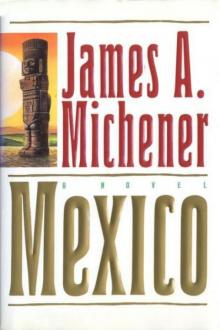 Mexico
Mexico The World Is My Home: A Memoir
The World Is My Home: A Memoir Sayonara
Sayonara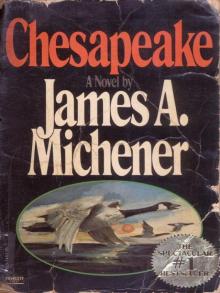 Chesapeake
Chesapeake The Novel
The Novel Rascals in Paradise
Rascals in Paradise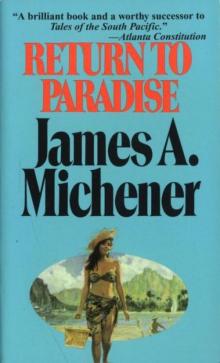 Return to Paradise
Return to Paradise Presidential Lottery: The Reckless Gamble in Our Electoral System
Presidential Lottery: The Reckless Gamble in Our Electoral System The Source
The Source Poland
Poland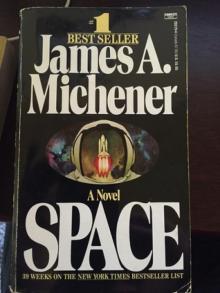 Space
Space Caravans
Caravans Creatures of the Kingdom: Stories of Animals and Nature
Creatures of the Kingdom: Stories of Animals and Nature Iberia
Iberia Hawaii
Hawaii The Watermen: Selections From Chesapeake
The Watermen: Selections From Chesapeake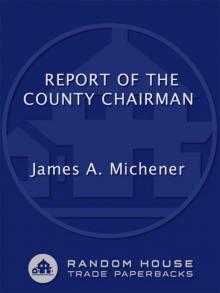 Report of the County Chairman
Report of the County Chairman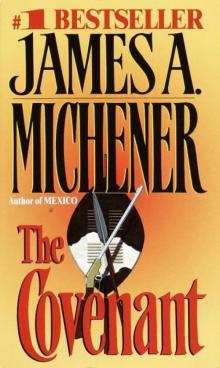 The Covenant
The Covenant The Bridges at Toko-ri
The Bridges at Toko-ri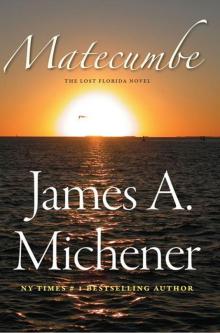 Matecumbe
Matecumbe Journey: A Novel
Journey: A Novel Centennial
Centennial Sports in America
Sports in America Texas
Texas Miracle in Seville
Miracle in Seville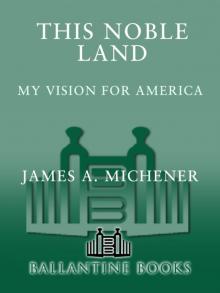 This Noble Land: My Vision for America
This Noble Land: My Vision for America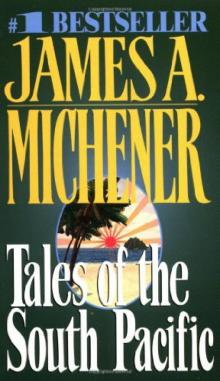 Tales of the South Pacific
Tales of the South Pacific Bridges at Toko-Ri
Bridges at Toko-Ri Space: A Novel
Space: A Novel Presidential Lottery
Presidential Lottery Sayonara: A Novel
Sayonara: A Novel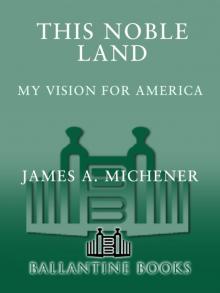 This Noble Land
This Noble Land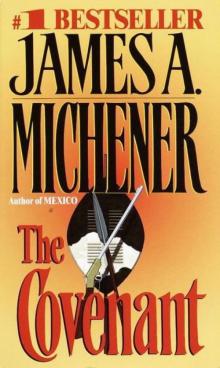 The Covenant: A Novel
The Covenant: A Novel Miracle in Seville: A Novel
Miracle in Seville: A Novel The Bridge at Andau
The Bridge at Andau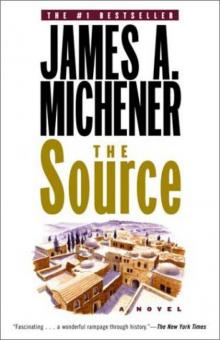 Source
Source The Source: A Novel
The Source: A Novel Journey
Journey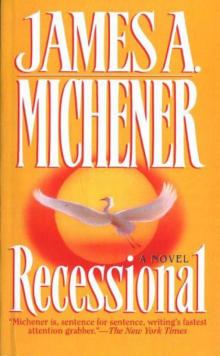 Recessional: A Novel
Recessional: A Novel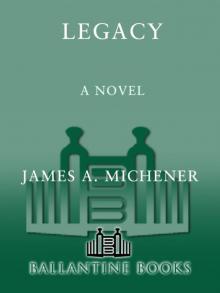 Legacy: A Novel
Legacy: A Novel The Bridges at Toko-Ri: A Novel
The Bridges at Toko-Ri: A Novel Poland: A Novel
Poland: A Novel